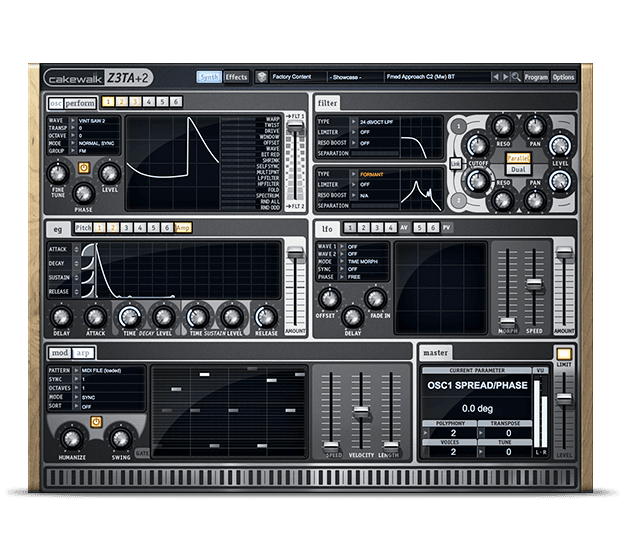Mastering is about creating the finest possible showcase for an artist's tracks. Usually this means trying to maintain state-of-the-art quality and transparency. But with some tracks, the "finest possible showcase" may have different priorities.
Take dance mixes, for example. As DJs spin recording after recording, a consistent level is important -- you don't want to segue into a radical level drop, particularly if you're building to the peak of the evening. As a result, dance musicians agree to a de facto standard reference level: Put as much average level as is technologically possible on a recording.
Mastering for dance music walks a fine line between maintaining enough dynamics to be musically interesting, while keeping the tune loud enough to hold its own when bookended between two cuts that were engineered for flat-out maximum level. Fortunately, today's plug-in tools go a long way toward letting you optimize a mix with as few compromises as possible.
THE RIGHT TOOL FOR THE RIGHT JOB
Traditionally, the mainstays for mastering have been high-quality dynamics control and flexible equalization. However, the evolution of the art has brought us the multiband compressor, which combines filtering and compression. The way this tool works is, you specify a range of frequencies to be affected by an associated compressor. Meanwhile, a separate range of frequencies can be affected by a different compressor. This allows for tricks such as tightly controlling the bass response through limiting, while adding midrange compression in, for example, the 1kHz region to improve "snap" and allow instruments like guitar to "speak" a little better.
When it comes to plug-ins, you can choose from a variety of multiband compressors. My current favorite is the Spectral Design plug-in that's part of the Steinberg Mastering Edition software package. However, some software packages (such as Sonic Foundry Sound Forge) include multiband compression as a standard feature, and there are other multiband compression plug-ins. These all work fairly similarly, so what's described here should be easy to translate to whatever you're using.THE MASTERING PLUG-IN SETUP
Multiband compressors typically include three to five stages. Often, three stages (for low, mid, and high) are enough; any more can just complicate matters. Many times what you really need instead of more stages is simply a stage of traditional parametric EQ. However, for some "problem cases" where it's crucial to apply a specific amount of dynamics processing to a specific frequency range, four or five bands can come in handy.
FINDING THOSE FREQUENCIES
Using a multiband compressor involves isolating the specific frequencies that need work, then processing them with the compressor. Again referring to Figure 1, you can adjust each band's width and amplitude in the left pane, and the input/output transfer function (which determines the shape of the compression, expansion, or limiting) in the right pane. When you solo a band, the line representing its transfer function becomes brighter than the others. Clicking on this line provides "break points" that you can drag to alter the transfer function curve.
First, I soloed the lowest bass band and adjusted it to include the desired bass range. This meant going as high as I could without picking up the midrange; an upper limit of about 100Hz sounded right.
Next came the treble frequencies. Because of the weak high end, I initially set the low end of the high range to around 4kHz. This picked up the brightest frequencies, while again leaving the midrange mostly alone. However, when I then soloed the midrange, the sound was a bit too bright. Moving the treble crossover point down to 2kHz produced the desired results: The tune's bottom and power was in the bass band, the brightness and sheen in the treble band, and the definition in the midrange band.
Now it was time to address each problem through dynamics processing. Fixing the high end simply involved adding a small amount of compression, but starting at a low threshold. This acted like a treble boost, with the compression bringing up some of the lower-level high frequencies. This compression was so effective at lifting the brightness that it was necessary to bring down the treble band's amplitude a bit in the left pane.
The midrange needed the same kind of treatment to increase intelligibility. In fact, the reason you don't see three separate curves in the right pane is that the high and midrange response curves are so close as to cover each other. Adding midrange compression brought up some background vocals and instruments that had been almost buried.
Bass was the most interesting challenge. The kick/bass combination had an extremely long sustain, so the low end was not well-defined. In some ways this sounded really cool when you cranked the level, but it also obscured the rest of the track.
The fix for this band was to add expansion rather than compression. Signals below about -10dB were expanded downward to make them softer than normal. Signals above -10dB were treated more or less normally. This created more peaks and variations in the bass dynamics, but the loudest peaks were just as loud as before. Doing this opened up the whole tune; the bass no longer overwhelmed the rest of the track, but because the peaks were still plenty loud, it didn't sacrifice that all-important club bass sound. However, it was necessary to increase the overall level of this band a bit, because the expansion lowered the average bass level.
On some other tunes I've used expansion in the treble range to tame an overly bright high end. Doing high-end expansion typically allows transients, like a closed hi-hat strike, to come through just fine, which preserves a song's percussive nature. However, lower-level bright sounds fall in level more quickly, so they "get out of the way" of the rest of the song.
Of course, finding these frequencies and calling up just the right amount of compression is time-consuming. But when you finally nail the sound, hit bypass, and confirm that the mastered version slams the original, any time spent seems very worthwhile. 


